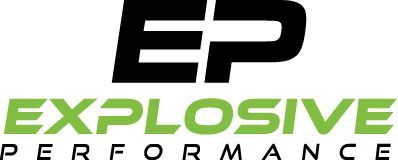Player Performance
About the Program
Developing healthy athletes who have the tools to succeed at their chosen level of play is a key part of creating "A Lifetime of Soccer". The Jackson Clinics and Explosive Performance are excited to continue evaluating our travel players' physical development, to measure improvements from the previous year.
Through this collaboration, the club aims to identify risk factors for injury and specific targets that will impact athletic performance.
Medical Assessments
with The Jackson Clinics
Foot Posture
The tests used to screen your athlete’s foot posture are described in the video below. If your athlete’s summary report suggested that they need improvement, the following ideas might be helpful to try at home or with your team!
Hip Strength
The test that was used to screen your athlete’s hip strength is described in the video below. If your athlete’s summary report suggested that they need improvement, the following exercises might be helpful to try at home or with your team!
Assessing Injuries
How do you know if an injury is readily manageable or if medical assistance is needed?
Soccer Specialists at The Jackson Clinics have developed a short video series outlining how to identify pain points for the following common soccer injuries along with the proper actions to take in order to prevent further damage:
Resources
The Jackson Clinics
Schedule an appointment for physical therapy with The Jackson Clinics.
Explosive Performance
Schedule a FREE Explosive Performance athlete training session.
Performance Testing
with Explosive Performance
Power
Speed
Change of Direction
Power Testing
Single Leg Broad Jump - Athletes jump off their right leg as far out as possible, and land on both legs. Repeat with the left leg.
This test demonstrates linear power, so athletes who perform well have the “speed off the mark” that we look for to react to a play. It is a low risk test to complete as our athletes jump with half their power (1 leg) and land with twice their power (2 legs). The Broad Jump test also identifies injury risk and performance deficits that research shows occurs in athletes with greater than a 10% difference in left to right leg power. Picture running with one of your legs wearing soccer shorts and the other wearing skinny jeans.
How to Improve
- Practice the test, as all you need is a tape measure.
- 3 sets of 3-5 reps max effort per leg would be quick and effective. If the athlete has a large imbalance (6 inches or more), they should train the bad leg for more reps and sets. Bad leg gets 5 reps and good leg only gets 2 or 3 reps.
Change of Direction Testing
505 Cutting Test - the test starts by sprinting from a start line through the 10 yard mark, and changing direction at the 15 yard mark. This means that you are only timed for 5 yards in, change direction, and then 5 yards out. Hence the name 5 0 5.
This test measures the athletes ability to decelerate turning left and then repeats the test turning right.
If the athlete has a greater than 10% difference left to right, then this will impact performance and possibly lead to injury. If I can beat my opponent only if I turn one way with the ball, I will probably keep turning that way, so I win. This can lead to overuse and limit the players ability on the field to beat an opponent either direction.
How to Improve
- This test is easy to turn into a drill. Repeat 3-5 reps per side, max effort, and with ample rest. Try to set a record each rep.








